Key takeaways:
- Confronting fears in the classroom transformed vulnerability into growth and camaraderie among classmates.
- Active participation and peer mentoring fostered a supportive learning community, enhancing the educational experience.
- Setting specific goals and engaging in self-reflection were essential strategies for effective learning and personal development.
- Applying classroom knowledge to real-world situations reinforced the value of education and facilitated community engagement.

My motivation for adult education
I remember sitting in my kitchen one evening, flipping through old textbooks that had gathered dust. It hit me then: I wanted more than just a job; I craved knowledge and the thrill of learning. What was holding me back? The answer was clear—fear of failure, but the desire to grow outweighed that fear.
As I began my adult education classes, each lesson felt like unlocking a new door. I often found myself asking, “How can I apply this to my life?” That curiosity fueled my motivation, driving me to participate actively in discussions and projects. There was something truly empowering about engaging with classmates who had their own experiences and stories to share.
The journey was also deeply emotional. I faced challenges that tested my resilience, reminding me of my capacity to adapt. I recall a particularly tough project where I struggled to grasp a concept, but with encouragement from my peers, I not only understood it but also excelled in it. That moment transformed my motivation from fear to excitement, illuminating my path forward in education.
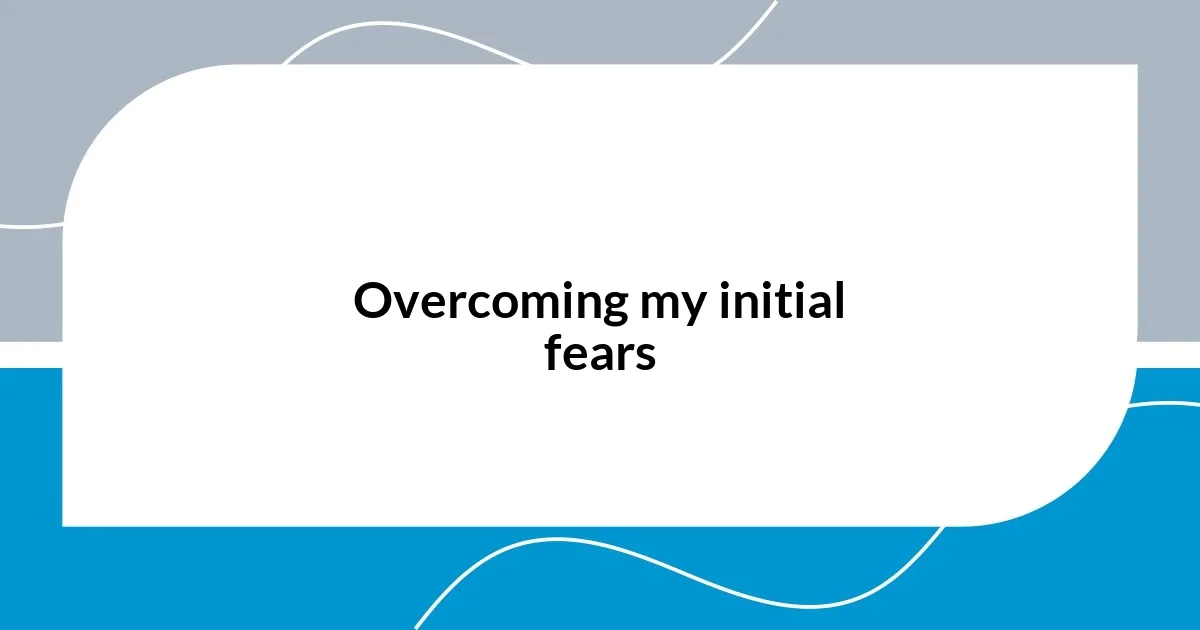
Overcoming my initial fears
Facing my fears as I stepped into that classroom felt like standing at the edge of a diving board, heart racing, questioning my courage to take the plunge. I was filled with doubts and insecurities—what if I embarrassed myself? It was in those moments that I realized vulnerability could lead to growth. With each session, I started to view my classmates not as competition, but as allies on a shared journey.
One particular instance stands out: during a group presentation, I found myself stumbling over my words. Instead of dwelling on my embarrassment, I took a deep breath and acknowledged my nerves aloud. To my surprise, the room filled with supportive nods and smiles. That moment shifted my perspective; I understood that everyone had their own fears, and it was okay to show mine. This newfound camaraderie opened my heart to learning together, transforming fear into a shared experience.
As I gradually confronted each anxiety—be it speaking up in class or tackling challenging assignments—I discovered that fear, when faced, often dissipates. It was a journey of self-acceptance, understanding that my imperfections were part of the learning process. I now embrace those butterflies in my stomach, knowing they are simply a sign of stepping out of my comfort zone.
| Fear | Realization |
|---|---|
| Fear of failure | It can lead to growth. |
| Fear of judgment | Vulnerability fosters connection. |
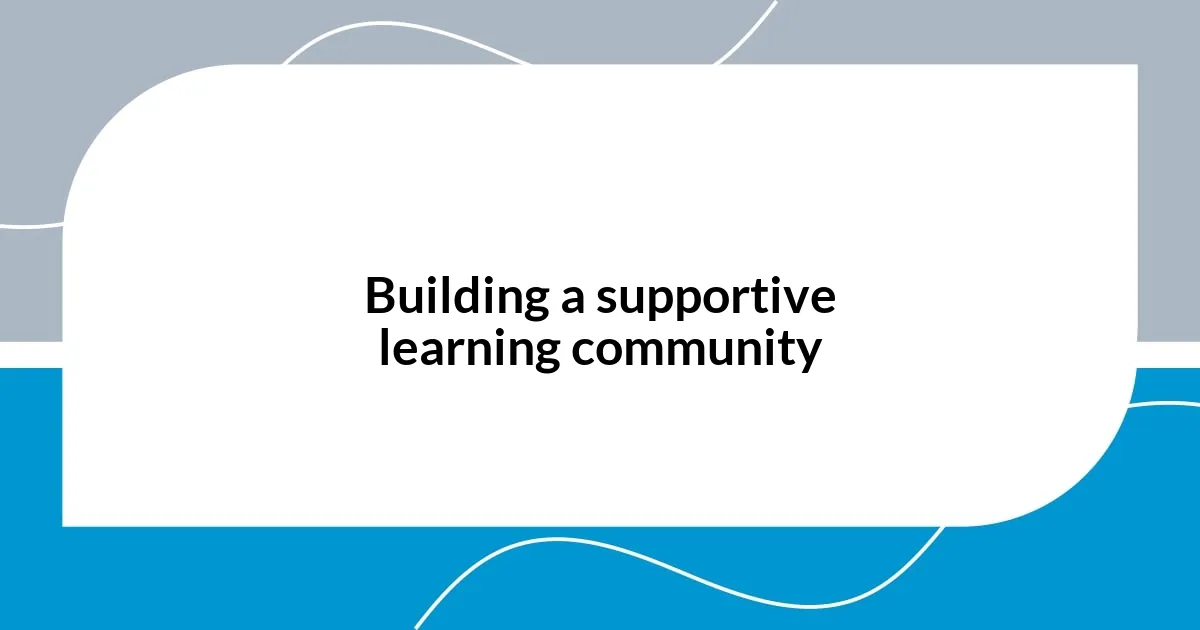
Building a supportive learning community
Building a supportive learning community requires a genuine connection between classmates. I vividly recall the first time our group decided to engage in a peer mentoring session. We gathered in a casual environment, each of us sharing our struggles and triumphs. It was remarkable to witness how openly we communicated, breaking down barriers that often exist in a formal setting. Sharing personal stories not only made me feel seen, but it also allowed others to relate, fostering a sense of trust and understanding.
- Active listening is crucial. When I truly listened to my classmates, I felt their passion and challenges, which opened the door to deeper conversations.
- Encouragement can come in simple forms, like a thumbs-up during a presentation or words of validation after a tough discussion. I still cherish those moments when a classmate told me, “You nailed that point!”
- Celebrating each other’s successes, no matter how small, helped cultivate a sense of belonging. I remember the joy we all shared when one of our group members aced a difficult exam; the room erupted with cheers, reinforcing our community spirit.
The power of shared experiences really shaped my journey in adult education. Each time we came together, we reinforced that learning isn’t a solo act but a collaborative venture, where every voice matters.
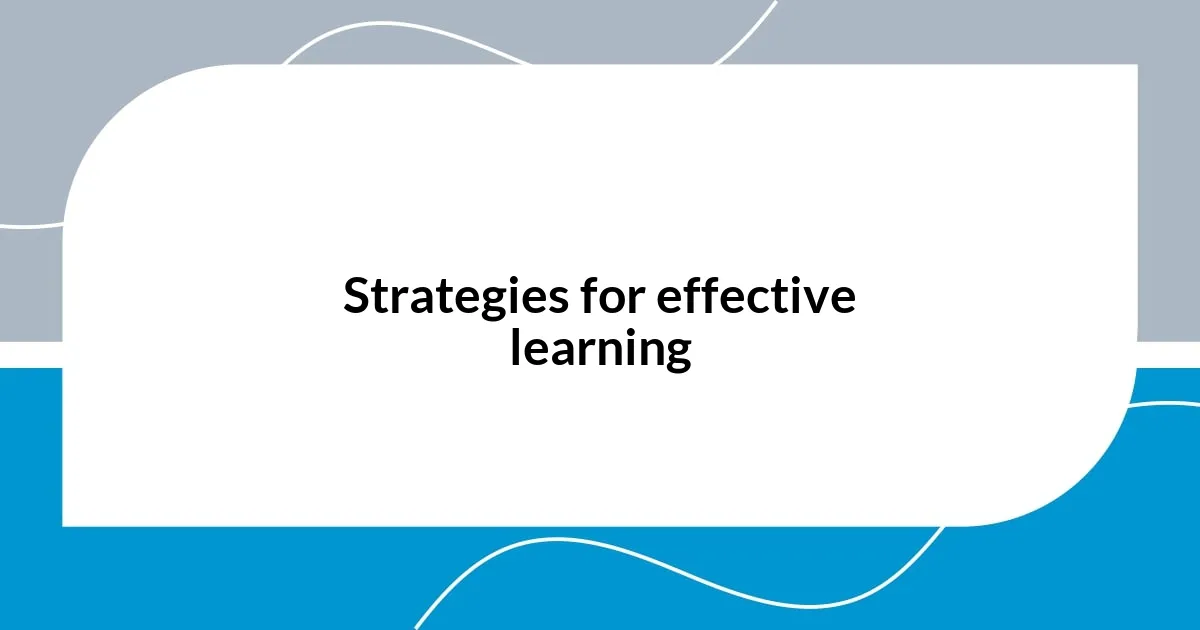
Strategies for effective learning
When it comes to effective learning, I’ve found that setting specific goals can make all the difference. In the first few weeks of my adult education classes, I wrote down clear, achievable objectives for every subject. Not only did this provide me with direction, but it also gave me a sense of purpose. Every time I checked off a goal, I felt a wave of achievement wash over me—like a small victory that fueled my motivation to keep going. Have you ever experienced that sense of accomplishment? It’s addicting!
Another strategy I embraced was the power of regular self-reflection. After each class, I took a few minutes to jot down what I learned and how I felt about it. This simple practice transformed my understanding. It helped me connect concepts and also highlighted areas where I struggled. I still remember the week I faced a particularly tough topic in statistics. By reviewing my feelings and thoughts, I realized I was overwhelmed by fear of failure. Acknowledging that feeling made it easier to address my confusion, leading to a breakthrough moment where everything clicked.
Lastly, leveraging technology played a significant role in my learning journey. I discovered various online resources and learning platforms that complemented my classroom experience. For instance, I stumbled upon an interactive app that turned dull study material into engaging quizzes. I remember spending late nights competing with myself, trying to beat my previous scores. Those late-night gaming sessions ironically became my favorite method of reinforcement. It brought an element of fun to studying, wouldn’t you agree? Balancing traditional learning with modern tools really opened new doors for effective understanding.
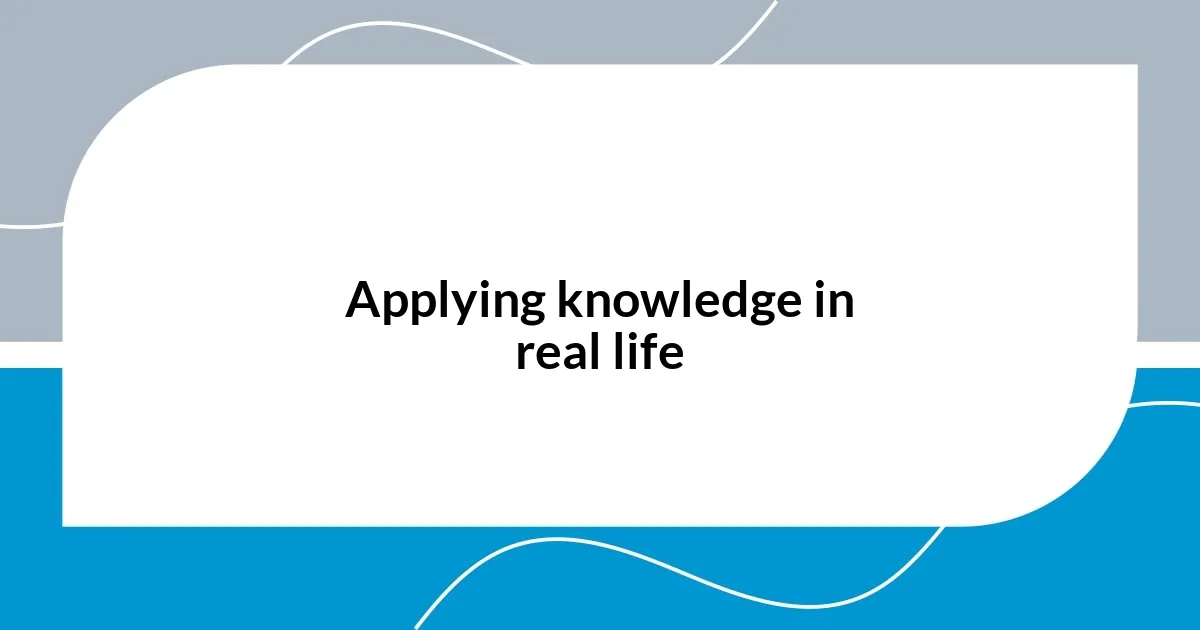
Applying knowledge in real life
Applying knowledge in real life often reveals unexpected opportunities. I remember the thrill of presenting a well-researched project on marketing strategies and seeing my ideas spark discussions beyond the classroom. One of my classmates, inspired by my research, approached me about collaborating on a community event. It struck me then how classroom knowledge isn’t just theoretical; it can catalyze real-world initiatives that enhance our communities.
I also discovered how integrating what I learned into my daily work transformed my approach. I once took a course on conflict resolution, and it proved invaluable in my job as a team leader. A few weeks after implementing these techniques, I found myself mediating a disagreement between two colleagues. Instead of feeling overwhelmed, I applied my newfound skills, which not only resolved the issue but also strengthened our teamwork. Have you ever faced a moment where your education prepared you for a real-life challenge? Reflecting on this helps me appreciate the seamless connection between learning and application.
Moreover, I realized that sharing knowledge is just as important as acquiring it. During a volunteer project, I had the chance to teach local youth about basic computer skills—skills I had honed in my classes. The joy in their eyes when they grasped new concepts was incredibly fulfilling. It reinforced my belief that education doesn’t stop with us; it’s a cycle. Isn’t it incredible how knowledge can transcend boundaries and empower others? Every teaching experience added another layer to my own learning journey, proving that the ripple effect of applying knowledge is limitless.
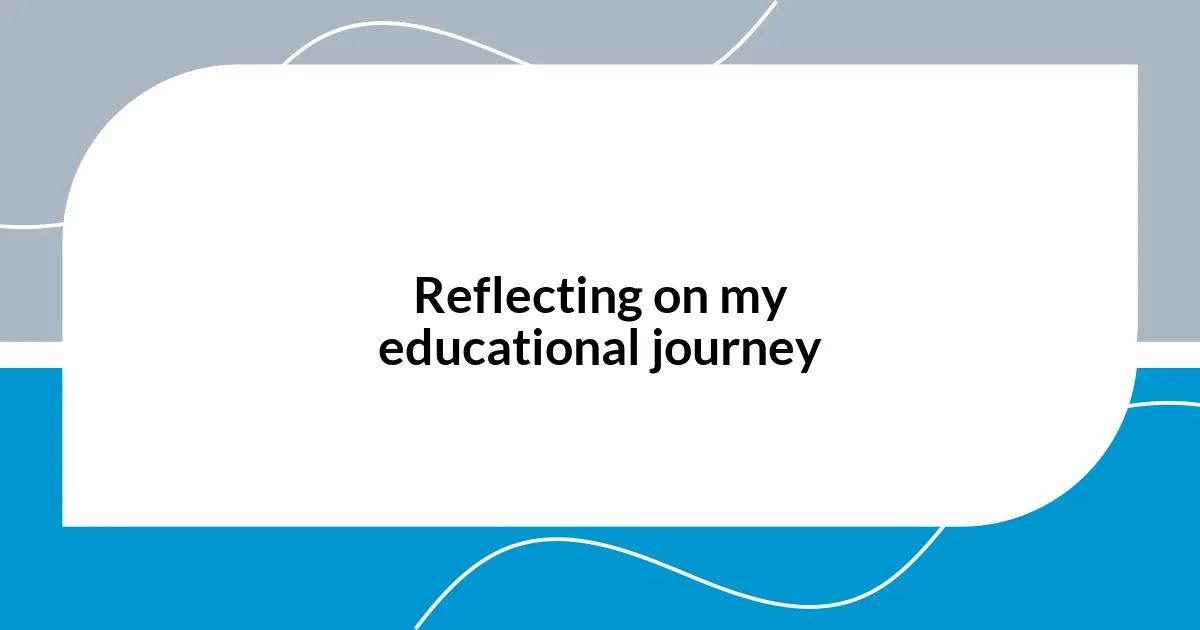
Reflecting on my educational journey
Reflecting on my educational journey brings back a wave of emotions. Each class felt like stepping into a new world—a blend of excitement and apprehension. I’ll never forget the first day, walking into that bustling classroom, my heart racing. I was surrounded by diverse faces, each with their own stories, and I realized we were all there for a common purpose: growth. Have you ever felt that exhilarating mix of fear and motivation? It’s a powerful catalyst for change.
There were moments when I truly questioned my abilities. One particularly challenging math assignment made me doubt whether I belonged there. Remembering how far I had come, I pushed through those feelings of inadequacy. By the end of the course, I not only gained skills but also a newfound confidence that helps me navigate life’s complexities today. It taught me that education is not just about knowledge—it’s about resilience and self-discovery.
Then, there’s the sheer joy of camaraderie. Collaborating with classmates on group projects felt like embarking on mini-adventures. Those late nights spent brainstorming ideas and celebrating small wins created bonds that I cherish even now. Do you recall any friendships formed through shared struggles and triumphs? Reflecting on those connections, I recognize they enriched my learning experience and made it much more fulfilling. It’s fascinating how education can weave such intricate threads of relationship into the fabric of our lives.